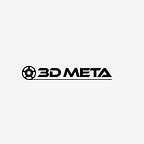Revolutionizing Additive Manufacturing: Exploring Metal-Filled 3D Printer Filament
In recent years, additive manufacturing, commonly known as 3D printing, has revolutionized the manufacturing industry by enabling rapid prototyping, customization, and on-demand production. While traditional 3D printing materials like plastics and resins have dominated the market, the emergence of metal-filled 3D printer filament has opened up new possibilities for creating durable, high-performance parts with metallic properties. In this comprehensive guide, we’ll delve into the world of metal-filled 3D printer filament, exploring its composition, applications, benefits, and future prospects.
Understanding Metal-Filled 3D Printer Filament:
Metal-filled 3D printer filament is a composite material consisting of a polymer matrix infused with metallic particles or fibers. These metal particles are typically made of materials like copper, bronze, stainless steel, aluminum, or even precious metals like gold or silver. The metal particles are finely ground and blended with the polymer matrix to create a homogeneous mixture that can be extruded through a 3D printer nozzle.
Applications and Industries:
Metal-filled 3D printer filament offers a wide range of applications across various industries, thanks to its unique properties and capabilities. Some common applications include:
Prototyping and Rapid Tooling:
Metal-filled filament is ideal for prototyping functional metal parts and components, allowing engineers and designers to quickly iterate and test their designs before mass production. Additionally, it can be used to create custom tooling and fixtures for manufacturing processes, reducing lead times and costs associated with traditional machining methods.
Aerospace and Automotive:
The aerospace and automotive industries benefit greatly from metal filled 3d printer filament due to its strength, durability, and heat resistance. It can be used to produce lightweight yet robust parts such as brackets, mounts, heat exchangers, and engine components, offering significant weight savings and performance improvements.
Electronics and Robotics:
Metal-filled filament is also well-suited for applications in the electronics and robotics industries, where conductivity and electromagnetic shielding are essential. It can be used to create enclosures, connectors, heat sinks, and other components that require both structural integrity and electrical conductivity.
Jewelry and Art:
For artists and jewelry designers, metal-filled filament offers a cost-effective alternative to traditional metal casting techniques. It enables the creation of intricate designs with metallic finishes, allowing for greater creativity and customization in jewelry making and artistic endeavors.
Benefits of Metal-Filled 3D Printer Filament:
Metal-filled 3D printer filament offers several key benefits that make it a preferred choice for many applications:
Enhanced Strength and Durability:
By incorporating metal particles into the polymer matrix, metal-filled filament provides superior strength, durability, and wear resistance compared to standard plastic filaments. This makes it suitable for producing functional prototypes and end-use parts that require mechanical integrity and longevity.
Metallic Appearance and Finish:
Metal-filled filament produces parts with a metallic appearance and finish, mimicking the aesthetic properties of real metal. This allows for the creation of visually appealing designs with a professional-looking finish, making it ideal for applications where aesthetics are important.
Conductivity and Thermal Properties:
Depending on the type of metal used, fluorescent 3d printer filament can exhibit varying degrees of electrical conductivity and thermal conductivity. This makes it suitable for applications requiring heat dissipation, electromagnetic shielding, or electrical connections.
Compatibility with Existing 3D Printing Systems:
Metal-filled filament is compatible with most standard desktop 3D printers that are capable of printing with composite materials. This allows for easy integration into existing workflows and enables users to leverage their existing equipment and expertise.
Future Prospects and Innovations:
As technology continues to advance, we can expect to see further innovations and advancements in metal-filled 3D printer filament. Researchers are exploring new methods for improving the dispersion of metal particles within the polymer matrix, as well as developing new types of metal-filled filaments with enhanced properties such as increased conductivity, higher strength, and improved printability.
Additionally, advancements in metal 3D printing technologies, such as selective laser melting (SLM) and direct metal laser sintering (DMLS), are making it possible to produce fully dense metal parts with complex geometries directly from metal powder. These technologies offer unparalleled precision and control over material properties, opening up new possibilities for metal additive manufacturing in industries such as aerospace, healthcare, and automotive.
